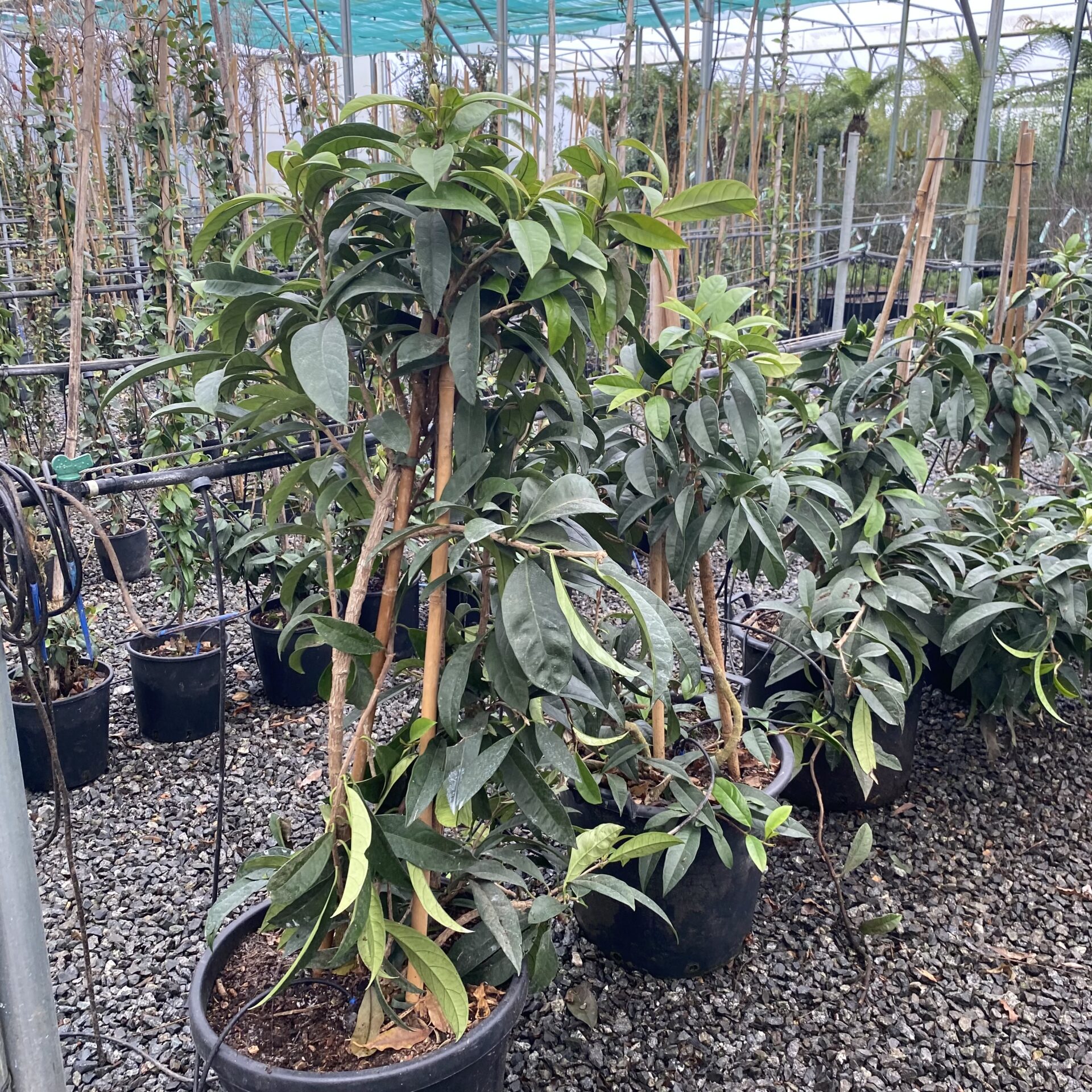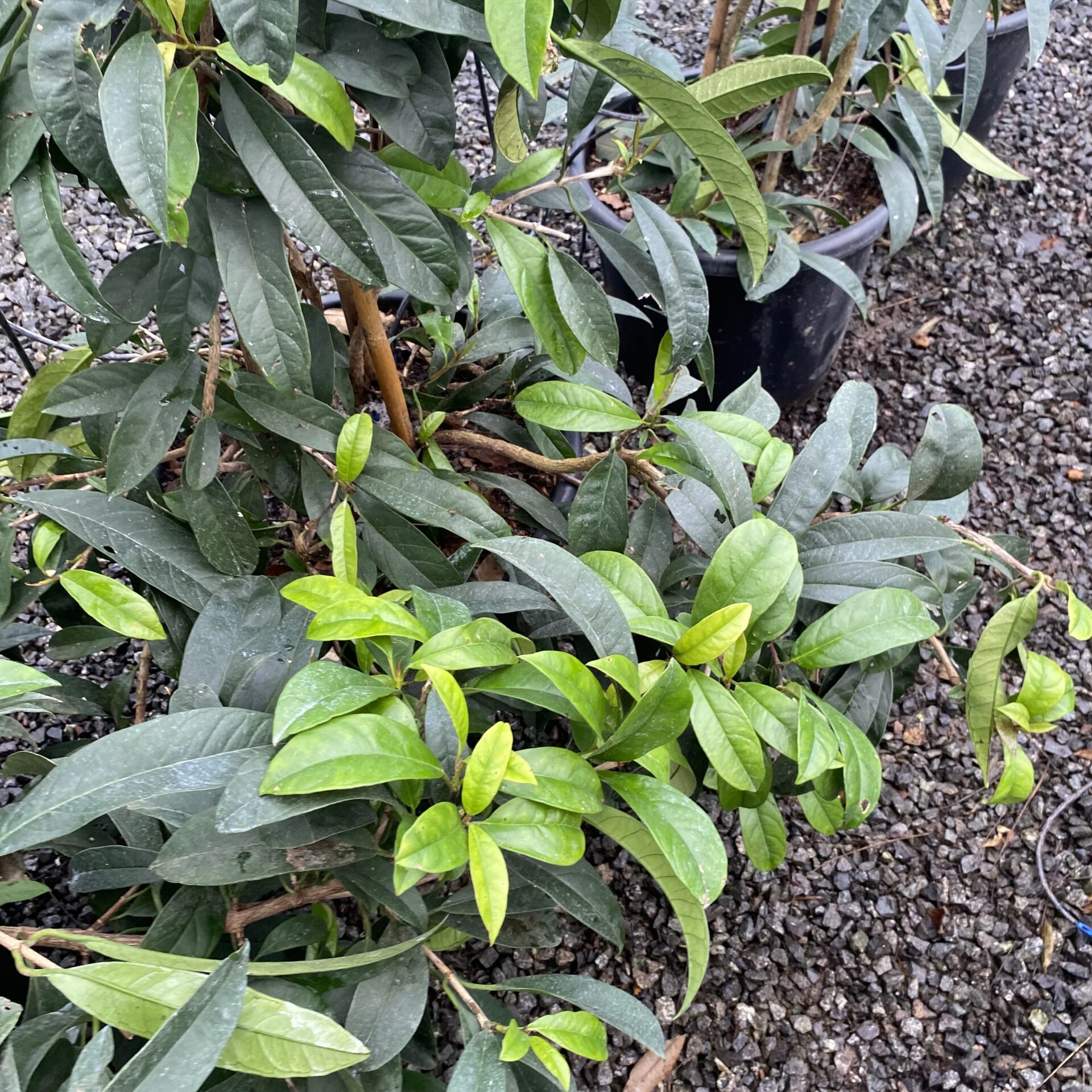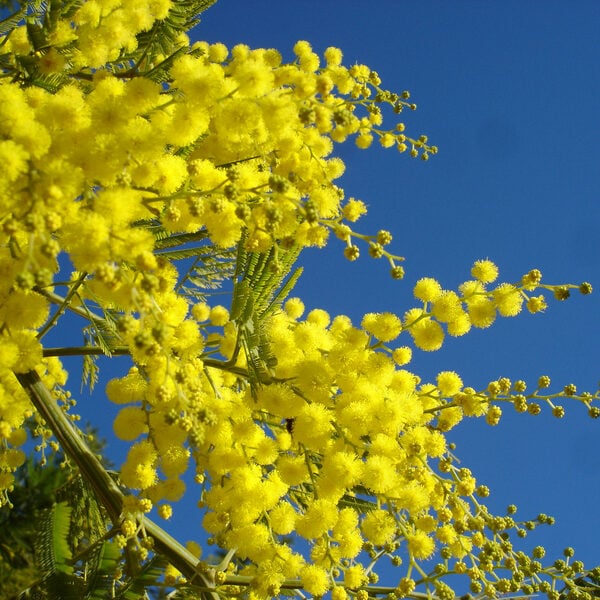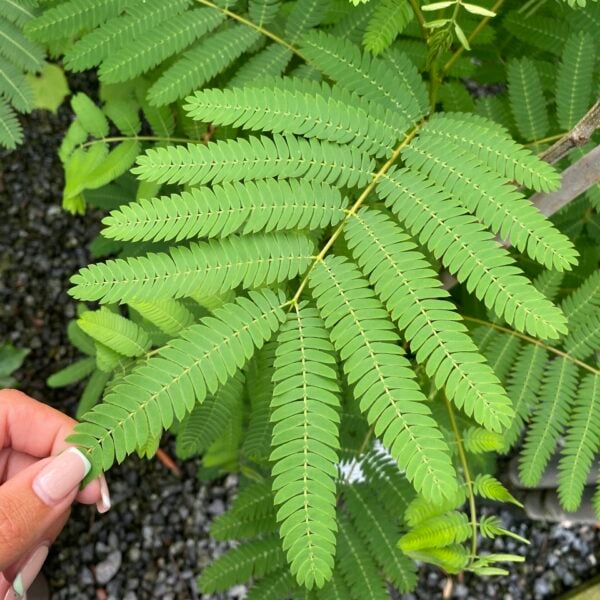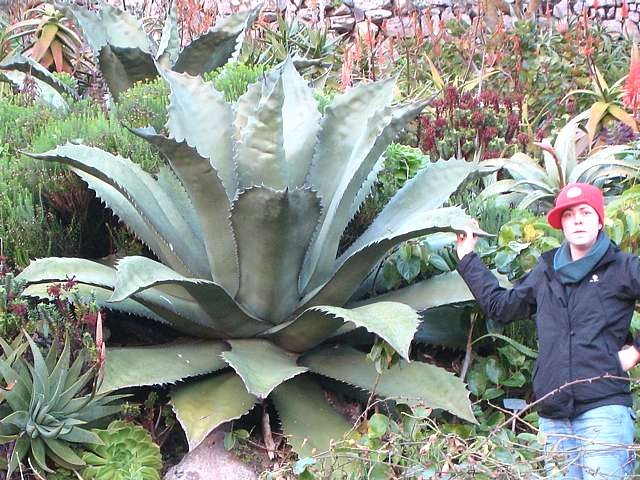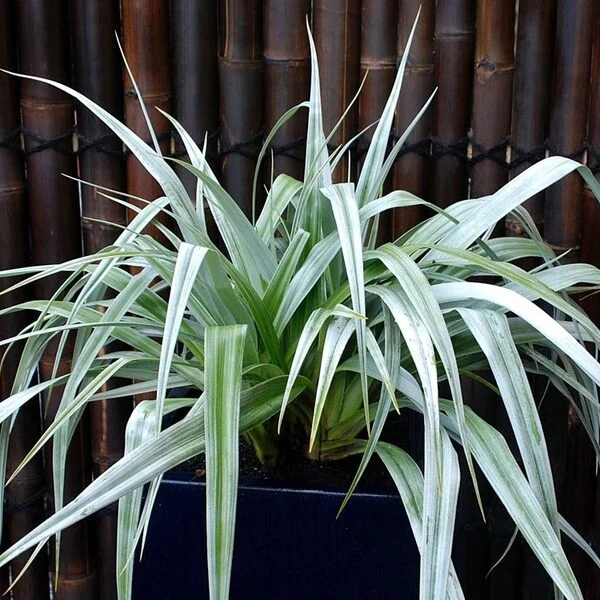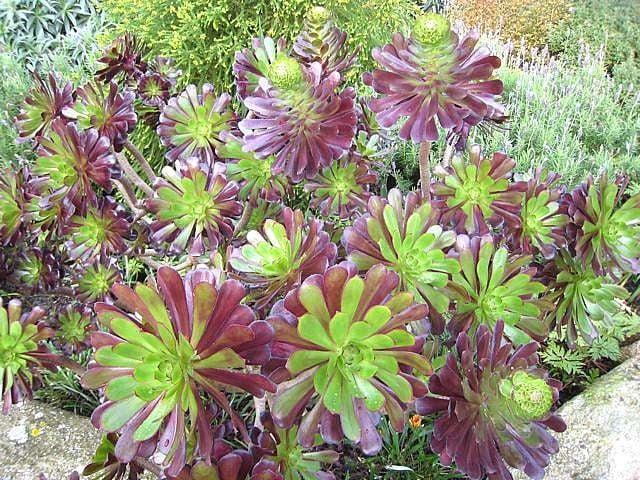Pileostegia viburnoides (Climbing Hydrangea)
From £42.50 incl. VAT
Large long slightly fleshy and very shiny evergreen leaves and frothy white flowers. Rich soil and a shady place are required. A slow growing but long lived climber.

Hardiness level Green
An evergreen climber for shade. At its best, the lushest, greenest, shiniest, fleshy and exotic thing you'll ever meet. How does one get it to look its best? Absence of direct sun (it beaches the evergreen leaves), patience (it takes a while to get going), control of slugs (they don't help) and, we suspect, Nitrogen. We used to have a nursery near Chichester and the water there was chalky which left calcium deposits on the leaves and blocked the irrigation system so we installed a thing called an Acid Dosing System. This allowed nitric acid to be injected into the irrigation water which dissolved the calcium compounds. It was unpleasant to manage but necessary and it allowed the wonderful Law of Unintended Consequences to rear its fascinating head. Nitric acid is, of course, full of nitrogen and plants like nitrogen. The effect on ferns was disastrous (they all went black) but the effect on Pileostegia was delicious. Never had we seen such lushness, shininess and rude vigour.
It's really a fancy name for a climbing Hydrangea. The same frothy white flowers and the same reluctance to get going but also, the same longevity. Once it gets going, it can get big but it'll take its time. Apart from using nitrogen-rich food, try removing the flowers - suddenly you get lots more growth with the lovely dark red new leaves. See the entry for the closely related Hydrangea seemannii for further hints.
Propagated by us from cuttings. The original plant was from Nymans Garden in West Sussex.
N.B. When clipping several plants with the same tool, have a bucket containing a 5% bleach solution and swish your blades around for 30 seconds between plants to sterilise them. This will help avoid the chance of cross contamination of disease.
As with all woody plants, plant high, exposing as much of the taper at the base of the trunk as possible. Allowing soil to accumulate round the base of a tree can be fatal. Keep very well watered when first planted.
Additional Information |
|
|---|---|
| Size | |
| Soil Type | |
| Light | |
| Plant Type | |
| Continent of Origin | |
| Specialist Plants | |
| Features | |
| Situation | Coastal, Exposed (To wind and sun), Mild City Gardens, Plants for Pots, Sheltered Garden |
| Flower Colour | |
| Hardiness | |




